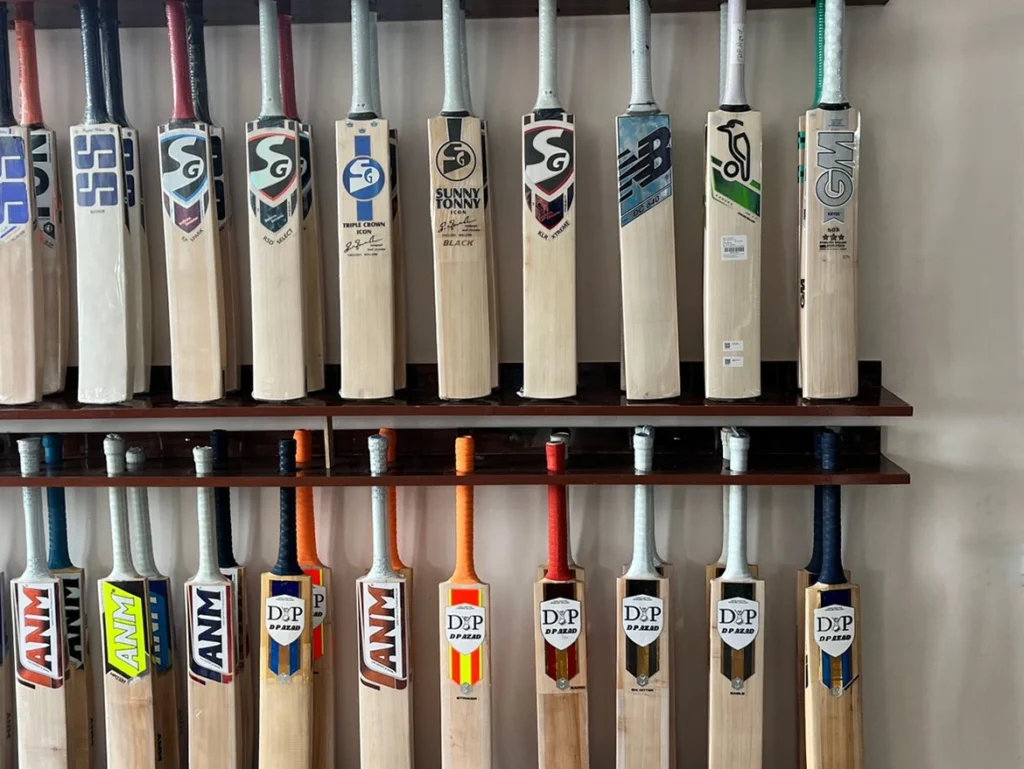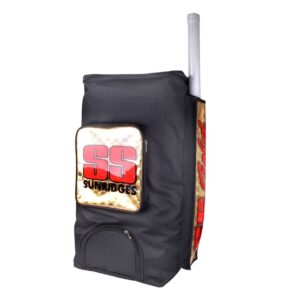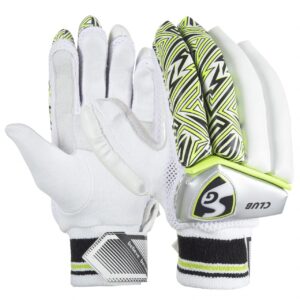Cricket is a sport deeply rooted in tradition, and the cricket bat is its most iconic symbol. But did you know there are several types of cricket bats designed to suit different playing styles, skill levels, and match formats? Choosing the right bat can have a huge impact on your game, from improving your shots to boosting your confidence.
This blog explores cricket bat types, providing insights into their features, uses, and what makes each one unique. Whether you’re a beginner or a seasoned pro, this guide will help you select the bat that matches your needs.
Why Does Choosing the Right Bat Matter?
Every cricketer, whether professional or recreational, needs a bat that complements their playing style. The wrong bat can hinder performance, reduce comfort, and even lead to injuries. Understanding the types of bats in cricket can make a significant difference in how you play.
How Many Types of Cricket Bats Are There?
There are generally six major types of cricket bats: English Willow, Kashmir Willow, Tennis Ball, Training, Youth, and Composite bats. Each serves a unique purpose, catering to different skill levels and playing conditions.
Types of Cricket Bats
Cricket bats come in various types, each crafted for different playing styles, conditions, and levels of experience. Here’s a look at the most common types:
1) English Willow Bats
English Willow bats are considered the top of the line when it comes to cricket bats. Made from the wood of the English Willow tree, these bats offer excellent power and control. They are the preferred choice of professional cricketers and are known for their high-quality craftsmanship. If you are serious about your cricket game and want the best bat possible, an English Willow bat is the way to go.
Benefits
- Superior performance: English Willow bats are preferred by professional cricketers for their superior performance on the field.
- Durability: With proper care and maintenance, English Willow bats can last for many seasons.
- Improved power and control: The lightweight nature of these bats allows for better power and control when hitting the ball.
Considerations
- Cost: English Willow bats tend to be more expensive compared to other types of bats.
- Maintenance: It is important to properly oil and protect English Willow bats to ensure their longevity.
Key Characteristics:
Lightweight, better ping (rebound), high stroke performance, and a polished finish. Ideal for advanced players who want to hit big shots.
2) Kashmir Willow Bats
Kashmir Willow bats are a more affordable option for those who still want a high-quality bat. Made from the wood of the Kashmir Willow tree, these bats offer good power and durability. While they may not have the same level of performance as English Willow bats, they are still a solid choice for amateur and club players.
Benefits
- Superior performance: English Willow bats are preferred by professional cricketers for their superior performance on the field.
- Durability: With proper care and maintenance, English Willow bats can last for many seasons.
- Improved power and control: The lightweight nature of these bats allows for better power and control when hitting the ball.
Considerations
- Performance: While Kashmir Willow bats are durable, they may not offer the same level of performance as English Willow bats.
- Weight: The heavier weight of these bats may impact the player’s ability to maneuver and handle the bat effectively.
Key Characteristics:
Heavier weight, less rebound, more durability, and rougher finish. Ideal for beginners and players looking for a durable option at a lower cost.
3) Composite Bats
Composite bats are made from a combination of materials, such as carbon fiber, fiberglass, and wood. These bats are known for their light weight and durability, making them a popular choice among players who want a bat that will last a long time. While they may not offer the same level of performance as traditional wooden bats, they are a good option for players who want a reliable bat that can withstand the wear and tear of frequent use.
Benefits
- Lightweight: Carbon Fiber bats are incredibly lightweight, allowing for better maneuverability on the field.
- Durability: These bats are less likely to break or damage compared to traditional wood bats.
- Power and control: The unique design of Carbon Fiber bats allows for improved power and control when hitting the ball.
Considerations
- Cost: Carbon Fiber bats tend to be more expensive compared to traditional wood bats.
- Availability: Carbon Fiber bats may not be as readily available as other types of bats.
4) Bamboo Bat
Moving on to Bamboo bats, these are a relatively new addition to the market but have quickly gained popularity. Bamboo is a sustainable and eco-friendly material that is known for its strength and flexibility. Bamboo bats are durable and provide good power, making them a solid choice for players looking for a more environmentally friendly option.
Benefits
- Lightweight: Bamboo bats are incredibly lightweight, making them easy to handle and swing.
- Durable: Bamboo is a strong and durable material, capable of withstanding the impact of the cricket ball.
- Eco-friendly: Bamboo bats are a great option for players who are conscious of their environmental impact.
Considerations
- Performance: Bamboo bats may not offer the same level of performance as traditional wood bats like English Willow.
- Availability: Bamboo bats may be harder to find compared to other types of bats.
5) Training or Practice Bats
- Training bats, such as heavy training bats or narrow bats, are specifically designed for practice sessions.
- Heavy training bats help players build strength and improve their stroke power, while narrow bats help players focus on precision and accuracy during batting practice.
- These bats are not intended for match use but can be an excellent addition to a player’s training routine.
Key Characteristics:
Specialized design for training purposes, not suitable for regular gameplay. Ideal for players looking to enhance specific aspects of their batting skills.
6) T20 Bats
- T20 cricket has grown in popularity, and so has the demand for bats suited for the shorter format of the game.
- T20 bats are designed to be lighter with a thicker edge, allowing players to play aggressive shots with ease.
- These bats typically have a larger sweet spot and are designed for power-hitting, making them suitable for high-scoring formats.
Key Characteristics:
Lighter weight, thick edges, large sweet spot, designed for power shots. Ideal for players focusing on aggressive batting in shorter formats.
7) Junior Cricket Bats
- Junior bats are specifically designed for young players. They come in various sizes to match the height and strength of children and teenagers.
- Made from either Kashmir willow or English willow, junior bats are lighter and easier to handle, helping young players develop their skills without strain.
Key Characteristics:
Lighter weight, smaller sizes, easier to control. Ideal for children and beginners learning the basics of cricket.
Choosing the Right Cricket Bat
When it comes to cricket, the importance of choosing the right cricket bat cannot be overstated. Your bat is an extension of yourself on the field, and selecting the perfect one can make all the difference in your performance. Choosing the right cricket bat is crucial for your performance and enjoyment on the field.
Here, we will delve into the various factors that come into play when choosing the right cricket bat.
Type of Willow
The type of willow used in a cricket bat greatly affects its performance. English willow bats are considered superior to Kashmir willow bats, as they provide better power, feel, and durability. If you are a serious player looking for top-notch performance, investing in an English willow bat is the way to go.
Weight and Balance
The weight and balance of a cricket bat play a significant role in your batting technique. A bat that is too heavy can slow down your swing, while a bat that is too light may lack power. It is important to choose a bat that feels comfortable and well-balanced in your hands.
Handle
The handle of a cricket bat is another important factor to consider. Players have the option to choose between a round handle or an oval handle, depending on their personal preference. It is recommended to test out different handle styles to see which one feels most comfortable and secure.
Grip
The grip of a cricket bat is often overlooked but is essential for a player’s comfort and control. A good grip can prevent the bat from slipping out of your hands during play. There are various types of grips available, including rubber, octopus, and cone grips. Experiment with different grips to find the one that suits your playing style.
Player's Skill Level
One of the most crucial factors to consider when selecting a cricket bat is the player’s skill level. Beginners may benefit from a lighter bat with a larger sweet spot, while more experienced players may prefer a heavier bat for increased power and control. It is essential to assess your skill level honestly and choose a bat that matches your abilities.
Player's Style Of Play
Every cricketer has a unique style of play, whether it be aggressive and attacking or more defensive and traditional. Your playing style should dictate the type of bat you choose, with aggressive players opting for a bat with a longer blade and thicker edges for power hitting, while defensive players may prefer a bat with a lighter pick-up and a larger sweet spot for precision shots.
Brand and Price
Finally, consider the brand reputation and price when selecting a cricket bat. While top-of-the-line bats from well-known brands may come with a hefty price tag, they often offer superior quality and performance. However, there are also budget-friendly options available that can still provide good value for money.
Choosing the right cricket bat is a decision that should not be taken lightly. choosing the right cricket bat is a personal decision that depends on your playing style, preferences, and budget. By considering these key factors, you can make an informed decision and select the perfect bat that will help you elevate your game on the field.
Factors to Consider When Choosing a Cricket Bat
Here are some tips to help you pick the perfect bat:
- Purpose: Decide if you need the bat for competitive matches, casual games, or training.
- Material: Opt for English Willow for professional play, Kashmir Willow for durability, or Tennis Ball bats for recreational use.
- Weight and Size: Choose a bat that feels balanced and matches your height.
- Budget: Premium bats like English Willow are costly but worth the investment for serious players.
Top Brands for Cricket Bats
When it comes to cricket bats, trusted brands ensure superior quality and performance. Here are some of the best brands:
- SS (Sareen Sports): Famous for its durable and powerful bats like SS Ton.
- Gray Nicolls: Offers professional-grade English Willow bats.
- SG (Sanspareils Greenlands): Caters to players of all skill levels with a wide range of options.
- Kookaburra: Combines traditional craftsmanship with innovative designs.
Final Thoughts
Choosing the right cricket bat is vital for improving your game and enjoying the sport. Whether you’re smashing boundaries with an English Willow bat or practicing precision with a training bat, understanding the types of bats in cricket ensures you make the right decision.
Take your time to evaluate your needs, test the bat for balance and comfort, and invest in one that complements your skills.
Ready to find your perfect cricket bat? Explore a wide range of cricket bats at DP Azad Sports and gear up for your next match!
Explore the Finest Cricket Gear at DP Azad Sports!
At DP Azad Sports, we offer a wide selection of premium cricket bats, including English Willow, Kashmir Willow, and Tennis Ball bats. Designed for power, precision, and durability, our bats are trusted by players at every level.
Don’t wait to elevate your game! Shop now and find the cricket bat that matches your style and skill. Buy today and step onto the field with confidence!
FAQs About Cricket Bats
What is the most common type of cricket bat?
English Willow bats are the most popular for professional cricket, while Tennis Ball bats dominate recreational cricket.
What are the differences between English Willow and Kashmir Willow bats?
English Willow bats are lighter, more responsive, and better suited for professional play, while Kashmir Willow bats are heavier and more durable, making them ideal for beginners.
Can I use a Tennis Ball bat with leather balls?
No, Tennis Ball bats are not designed to withstand the impact of leather balls and may get damaged.
What are cricket practice tools?
These include ball mallets, bowling machines, catching gloves, and stumps for training purposes.















